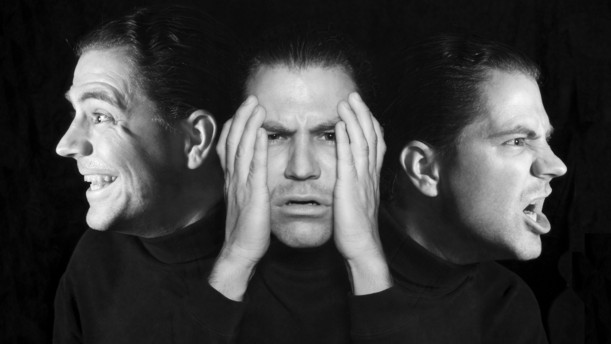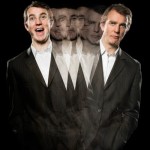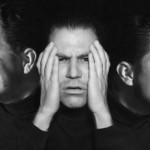Bipolar Disease symptoms include feeling overly ecstatic to feeling tremendously poignant. This high and low process in one’s mood consists the exasperating Bipolar Disease symptoms.
The bipolar disease symptoms include numerous contrary feelings of ups and downs. A bipolar disease patient experiences a manic episode when most of the day, more than 3 other bipolar disease symptoms. Also, it happens almost every single day for more than a week or even in a couple of months. Extreme changes in energy, activity, sleep, and behavior go along with these changes in mood. It is possible for someone with bipolar disorder to experience a long-lasting period of unstable moods rather than discrete episodes of depression or mania.
In addition to mania and depression, bipolar disorder can cause a range of moods, as shown on the scale.
 One side of the scale includes severe depression, moderate depression, and mild low mood. Moderate depression may cause less extreme symptoms, and mild low mood is called dysthymia when it is chronic or long-term. In the middle of the scale is normal or balanced mood.
One side of the scale includes severe depression, moderate depression, and mild low mood. Moderate depression may cause less extreme symptoms, and mild low mood is called dysthymia when it is chronic or long-term. In the middle of the scale is normal or balanced mood.
Hypomania, which refers to the mild to moderate level of mania, enables a person experiencing it to be overly dynamic. This may sound rather constructive but in fact it is already a Bipolar Disease Symptom. During hypomanic episodes, a person may have increased energy and activity levels that are not as severe as typical mania, or he or she may have episodes that last less than a week and do not require emergency care. A person having a hypomanic episode may feel very good, be highly productive, and function well. This person may not feel that anything is wrong even as family and friends recognize the mood swings as possible bipolar disorder. Â When left untreated, Hypomania may get worse and become severe mania or depression.
A sudden high or a manic episode in bipolar disease symptoms is oftentimes characterized by:
1. Being extremely energetic and fidgety
2. A strange, peculiar, frenzied mood
3. Being unpredictably and exceedingly ill-tempered or short-tempered
4. Increase in the speed of speech
5. Lack of focus or concentration
6. Erratic and irregular sleeping habits
7. Having too unrealistic or over-confidence with regard to one’s skills and strengths
8. Having lack of judgment or unrealistic judgment
9. Going on impulsive spending spree
10. Having a behavior which is not usual that can last for a long period of time
11. Being sexually active or aroused most of the time; being sexually promiscuous
12. Taking drugs
13. Exhibiting violent behavior
14. Being in denial that something is wrong when in fact there is
A severe state of hasty melancholy also known as a depressive episode happens when:
1. Guilty thoughts preoccupy the mind
2. Extreme sadness is felt and cynicism comes in
3. Guilty thoughts preoccupy the mind
4. One becomes uninterested with the once favored activities which includes sex
5. Feelings of exhaustion and low energy is observed
6. Memory loss
7. there is sudden crabbiness in one’s attitude
8. the person has trouble sleeping or can’t sleep that well
9. Loss of appetite or sudden weight loss/gain
10. Frequent body pains which are not caused by any physical damage
11. Suicidal notions. Suicide is another serious issue for those diagnosed with this disorder. It is estimated nearly 30 percent of those diagnosed with bipolar disorder will attempt suicide at least once in their lives. This suicide rate is 20 times that of the general population. Each of us needs to know the warnings signs — the red flags of despair — so we may be prepared to help a friend in crisis, to see the cry for help from a loved one and to seek assistance when our own resources for coping have worn thin.
A depressive episode is identified if more than 5 depressive Bipolar Disease symptoms occur all throughout the day, every day for a span of two weeks or more.
In serious episodes of depression or mania, psychotic symptoms, which include hallucinations and delusions, are also sometimes felt. The psychotic symptoms tend to reflect the person’s extreme mood. For example, psychotic symptoms for a person having a manic episode may include believing he or she is famous, has a lot of money, or has special powers. In the same way, a person having a depressive episode may believe he or she is ruined and penniless, or has committed a crime. As a result, Bipolar Disease afflicted people are oftentimes misdiagnosed as having a more severe mental illness called schizophrenia.
A mixed bipolar state, wherein fusions of mania and depression symptoms occur, can also be considered as a Bipolar Disease symptom. These combinations of Bipolar Disease Symptoms oftentimes involve anxiety, insomnia, sudden loss/gain in appetite, psychotic behavior and suicidal thoughts. A person under a mixed bipolar state experiences a confusing mode of sadness at the same time having vigorous or energetic feelings within.
Evidently, people experiencing Bipolar Disease Symptoms are plagued with two very contrary moods. However, through consistent medication and psychotherapy treatment, stabilization of the Bipolar Disease Symptoms can easily be attained.


